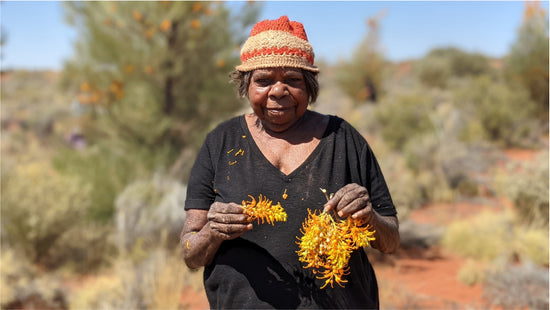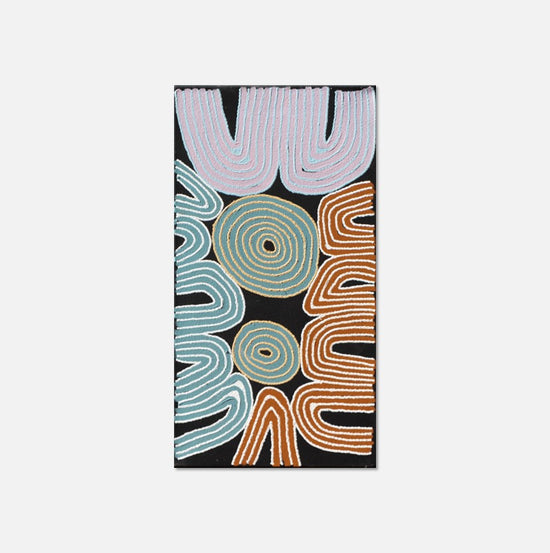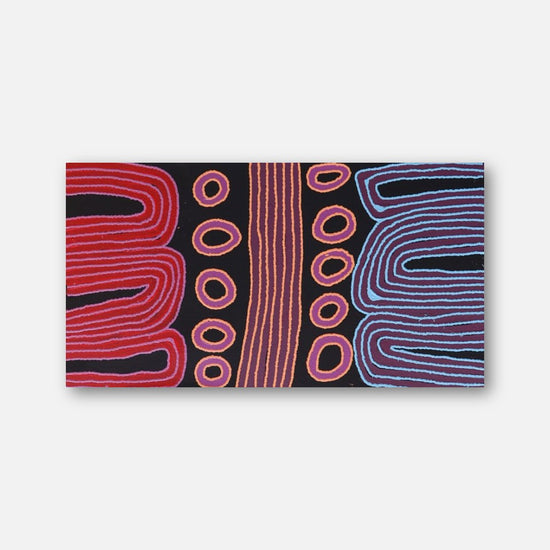A fierce hunter
Mary was born circa 1950 bush way at a site called Kuluwarri, deep in the western desert. As a child and teenager she lived at Kurlkurta, east of Kuluwarri, north west of Tjukurla, with her large family - her father, 4 mothers, 3 brothers and 5 sisters. She says there was always so much to hunt and eat. Too much tjala (honey ants), tinka (goanna), kampurampa (bush berries), kipara (bush turkey), nyaiia (wild cat), mangarta (quandong) and wangurnu (grain for bread). Mary is still a fierce hunter and is always the first out of the car on any bush trip to collect bush foods or dig a tinka out of its burrow.
Early life
When she was in her late teenage years, her family walked to Papunya where they had heard many people had moved. They left two brothers behind at Kulkurta. At Papunya, Mary met and was married to her first husband Mr Gibson. They had one daughter Roma, and two sons, Bob and Roger in Papunya. With three children under 10, they decided to move back to Kulkurta.
Here, Mary talks of many years travelling throughout the western desert region including regular trips to Tjarlirli Rockhole years before Tjukurla community was established nearby. She speaks of travelling to Kayilli (Patjarr) and then onto Port Headland for a holiday where her husband sadly passed away.
A mainstay at the arts centre
She lived in Tjukurla when it was first established as an outstation from Docker River in 1989 and remembers the building of what is now Tjukurla community. She was one of the first artists painting at Tjarlirli Art when it was established in 2006.
She now spends her time between Tjukurla and Docker River and is a central woman at the art centres in both communities. She is an important cultural figure with an exceptional depth of knowledge of the region she has lived in all her life.“I paint the sandhills, hills, rocks and the two little rockholes there, not big ones, little ones.”
— Mary Gibson


